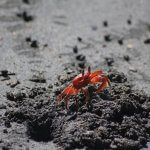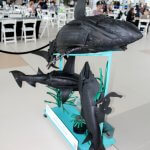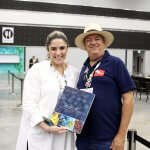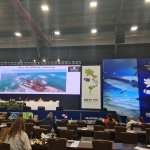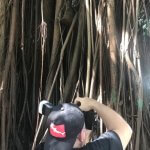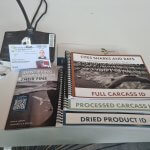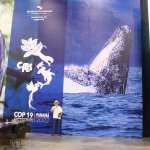What is CITES?
I remember as if it were yesterday the first Convention of the Parties (COP) of the Convention on International Trade in Endangered Species of Wild Fauna and Flora (CITES)… Bankok, Thailand, and the year was 2013 when the 16th edition took place.
In force since 1975, the most important part of Cites has been its two annexes. Annex 1 lists the most endangered species and which, as decided by the plenary of the Convention, have their international trade prohibited. Annex 2 lists species that may be threatened by international trade, and can only be traded by countries that prove through specific studies that there will be no threat to the species as a result of this trade.
Listen in portuguese here to a PodCast talking about Cites and sharks:
How it works
Back in the past, at Cop16 Cites 2013 Bankok, 4 proposals for elasmobranchs were taken to the plenary, and to our surprise, all were approved!
In this convention there are the delegations of the countries that, having adhered to the conference, having their dues up to date and present in the plenary, have the right to present proposals, request the floor to speak on any proposal, theirs or not, and the right to vote, when proposals are not approved or denied by consensus, that is, by everyone in the plenary. The country delegations, called parties, also have the right to request a secret ballot and to ask for a deadline for the approved measures to be implemented internationally.
It is the obligation of each party to create national instruments to respect the proposals contained in the annexes.
Who participates
There are also observers, Social Organizations, the so-called Non-Governmental Organizations – NGOs, who can register and pay a fee for each edition of Cites as observers. These are entitled to the table and seat in the plenary session, behind the Parties, and have the right to ask the chairman of the table to speak, in proposals that have important words to be said on the subject. The Chairman of the table decides, depending on time and other conditions, whether the Observer will be able to speak or not.
There are also visitors, who register but do not pay participation fees, do not have a table or seat in the plenary, but can enter and walk around the conference, being able to talk, interact and lobby with the parties outside the plenary.
Dives for Sharks always tries to participate as an Observer. It does not always succeed, as the fee is usually US$ 600.00.
Watch Divers for Sharks intervention:
Cop19 Cites 2022 Panama
This year Divers for Sharks attended once again as an observer. Mestre Truda and I, co-founders of Divers for Sharks, were present representing not only D4S but also the Un Solo Mar Project and the Brazilian Institute for Nature Conservation – Ibracon, with financial support from Oceans5 and SeaLegacy, without which this mission would not have been possible. We leave it here so thank you very much!
This edition was extremely important for elasmobranchs once again, as among the proposals for inclusion in the protection annexes, there were 4 of elasmobranchs, listed below:
The combination of these 4 proposals results in more than 50 sharks and rays protected in a single edition of Cites, a real record!
Watch the end of the conference summary here:
More than 50 protected sharks!
Once again to my surprise, all species had their texts approved in the first plenary vote and later the proposals themselves were approved once again in plenary for the appropriate annexes. During the polls, a period of 12 months was asked for them to be put into practice, which, if it wasn’t the idea, putting it on immediately, wasn’t the worst either, 24 months.
Out of a total of more than 50 proposals, these 4 were not only the ones that interested us, but the ones that Divers for Sharks had the expertise to help in the plenary approval process, since Elephants, hippos and many other species, both animal and plant, their survival was subjected to the capricious debates and decisions of a human collective, where interest is rarely honest and transparent, and decisions are usually based on commercial and profit issues.
How the game works
A good part of our job was to know, or deduce, the votes of each of the parties on the proposals, whether they would vote for or against preservation, doing the math and trying to reverse votes for the proposals we thought we would lose.
As in practice there are two votes: first to approve the text of the proposal, make amendments or cuts, and then, in a second vote at the end of the convention, approve or disapprove each of the proposals consolidated in the first vote. Usually the proposals approved in the first vote also pass in the second, since there is a need for a quorum in the plenary and a majority of votes to try to reverse something previously approved. There is mathematics and calculations at these times, to see if the quorum has changed, if delegations have left, new ones have arrived, etc.
Moment of suspense
The participating nations of the European Union vote as a block, that is, a single unified vote for all. It has ONE EU vote. However, at a certain point in the plenary session, the EU asks to speak and says that each of its members will vote separately… wow, I jumped from my chair and the scare was visible in everyone! Now, if the EU was going to stop being ONE vote, to be around 27 individual votes, that would change the whole game of quorum and majority numbers. We didn’t count on this one… Moments of desperation crossed everyone’s minds. But luckily this weird and suspicious maneuver did not, to say the least, cause any visible damage or alter any of the proposals we were monitoring. But learning remained and an eye was even more open at the next conferences.
At the end
There are a total of two weeks of the conference, with a theoretically free weekend in between, such as plenary sessions, work groups, meetings, lectures, presentations, meetings inside and outside the conference, parties, etc. Truda and I ended this conference once again tired, worn out and with several peaks of stress, tension, high blood pressure and such in our records these 14 days, but also once again we returned home with the feeling of victories for our much loved oceans and the certainty that what we could do, we did and in the end it worked!
And now?
Simple: start work so that changes happen within Brazil and also start preparing for the next editions. And raise so we can be present once again!
Want to help? This is the time:


